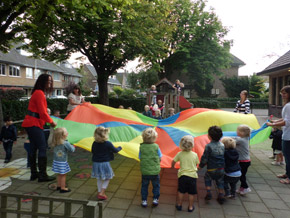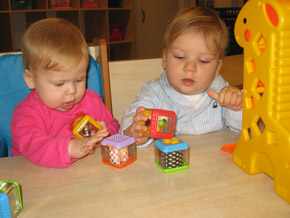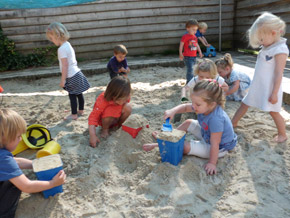Within The Clown Club, the following daily schedule is used as a guideline. The youngest children in the Baby Room have their own feeding schedule and sleeping rhythm. In consultation with the parents, this schedule will be adopted. The babies will transition to the regular daily rhythm as they get older.
07.00 – 09.30 Entry and free play or structured play at the table. This may include crafts, drawing, puzzles, etc.
09.30 –10.00 Mealtime. During this mealtime the children are given fruit and a cup of water. As needed, the children may be given another cracker/biscuit/breadsticks.
10.00 – 10.15 Change diapers/toilet round.
10.15 – 10.45 Circle time. During this moment, all children are greeted personally. Then songs are sung together, a book is read or another activity is done.
10.45 – 11.45 Outdoor play/activity. When weather conditions are bad, activities are offered indoors such as: chair dance, crafts.
11.45 – 12.45 Mealtime. For lunch the children are given bread and milk or water. We have a variety of spreads: cheese spread, peanut butter, chicken breast, cheese and apple syrup.
12.45 – 13.00 Change diapers/toilet round.
13.00 – 15.00 Rest/Sleep. The children who are no longer sleeping do rest and are then offered play materials that allow them to play quietly at the table.
15.00 – 15.30 Slowly wake up and get dressed
15.30 – 16.00 Dinner time, a small hot meal. It’s a set menu and the meal is about 80 grams. With the meal, the children drink water or tea. After the small meal, as needed, they are given a slice of sausage, cracker, cucumber or something similar offered.
16.00 – 17.00 Outdoor play/activity. When weather conditions are bad, activities are offered indoors such as: chair dance, crafts.
17.00 – 17.30 Light snack such as a breadstick, candy bar or cucumber. The children are also offered water.
17.30 – 17.45 Change diapers/ toilet round.
17.45 – 18.30 Free play






|
|---|